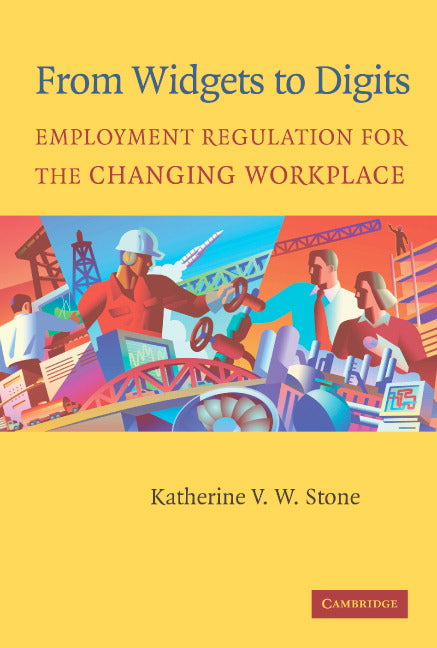Freshly Printed - allow 8 days lead
Couldn't load pickup availability
From Widgets to Digits
Employment Regulation for the Changing Workplace
This book studies changes in the employment relationship and the implications for labor and employment law.
Katherine V. W. Stone (Author)
9780521535991, Cambridge University Press
Paperback, published 26 July 2004
314 pages
22.9 x 15.2 x 1.8 cm, 0.42 kg
"This is a detailed and insightful work, which t houghtfully describes and contrasts the old and new workplace.' - Julissa Reynoso, Layer at a private litigation firm in New York City
From Widgits to Digits is about the changing nature of the employment relationship and its implications for labor and employment law. For most of the twentieth century, employers fostered long-term employment relationships through the use of implicit promises of job security, well-defined hierarchical job ladders, and longevity-based wage and benefit schemes. Today's employers no longer value longevity or seek to encourage long-term attachment between the employee and the firm. Instead employers seek flexibility in their employment relationships. As a result, employees now operate as free agents in a boundaryless workplace, in which they move across departmental lines within firms, and across firm borders, throughout their working lives. Today's challenge is to find a means to provide workers with continuity in wages, on-going training opportunities, sustainable and transferable skills, unambiguous ownership of their human capital, portable benefits, and an infrastructure of support structures to enable them to weather career transitions.
Introduction
Part I. Labor Relations Regimes of the Past: 1. Artisanal production in the nineteenth century
2. The labor system of the industrial era
3. From scientific management to internal labor markets
Part II. The Digital Workplace: 4. The changing nature of employment
5. The new employment relationship
Part III. Implications of Digital Job Structures for Labor and Employment Law: 6. Implications of the new workplace for labor and employment regulation
7.Disputes over ownership of human capital
8. The changing nature of employment discrimination
9. Unionism in the boundaryless workplace
10. Re-imagining employee representation
Part IV. Social Justice in the Digital Era: 11. The crisis in benefits and the collapse of the private welfare state
12. The working rich and the working poor: income inequality in the digital era
Conclusion
Notes
Appendices.
Subject Areas: International law [LB], Industrial relations [KNXB], Labour economics [KCF]


